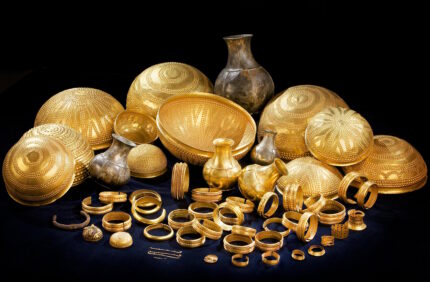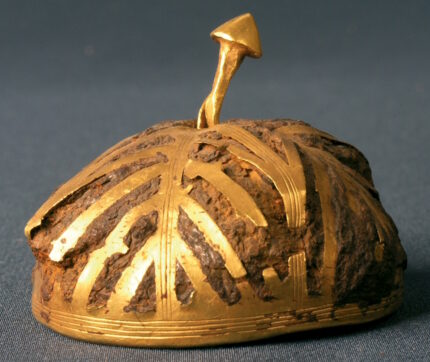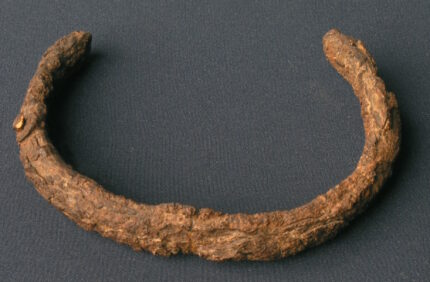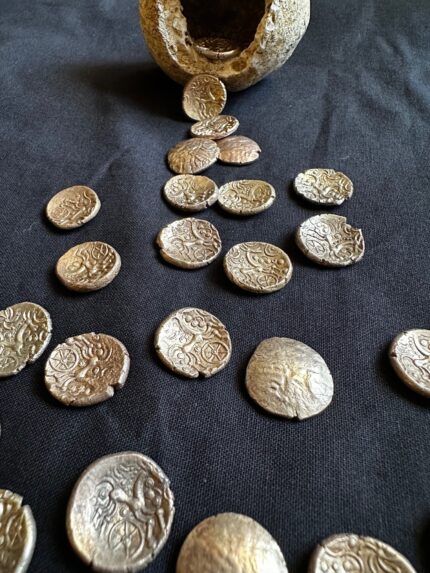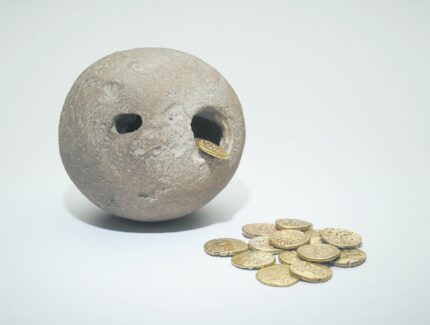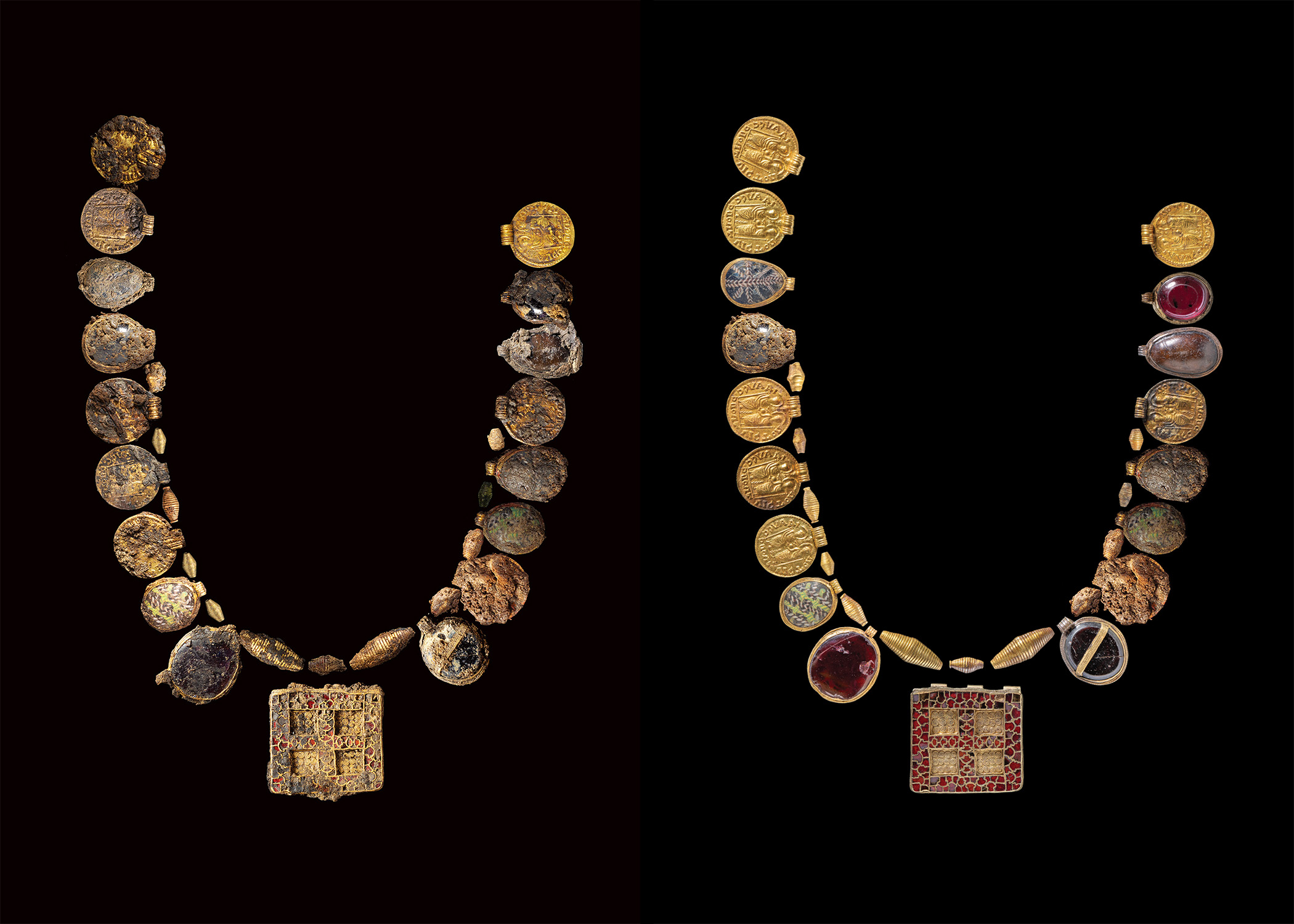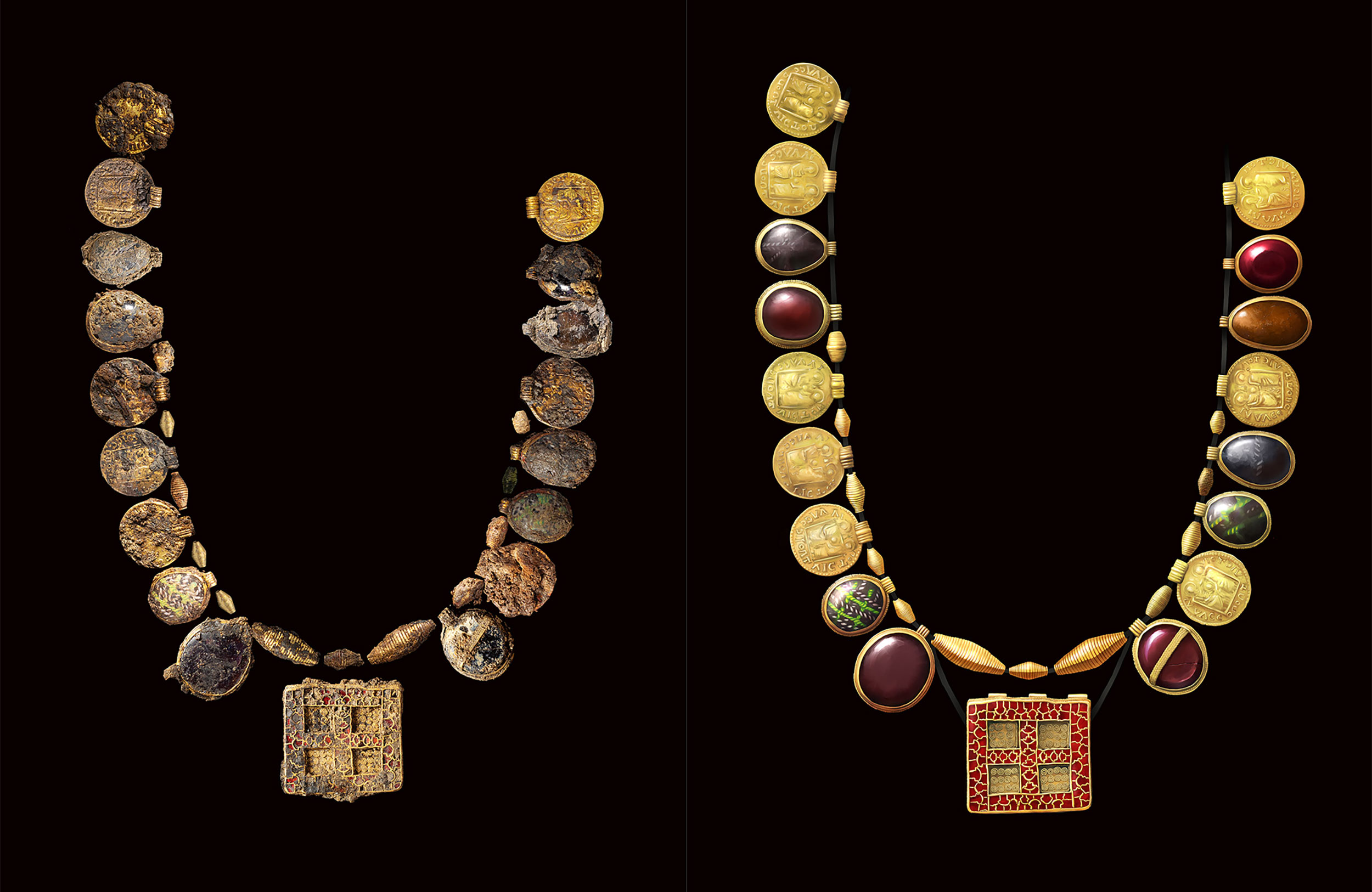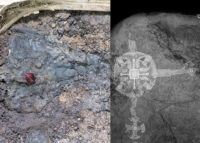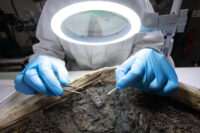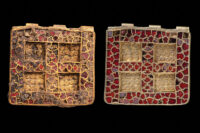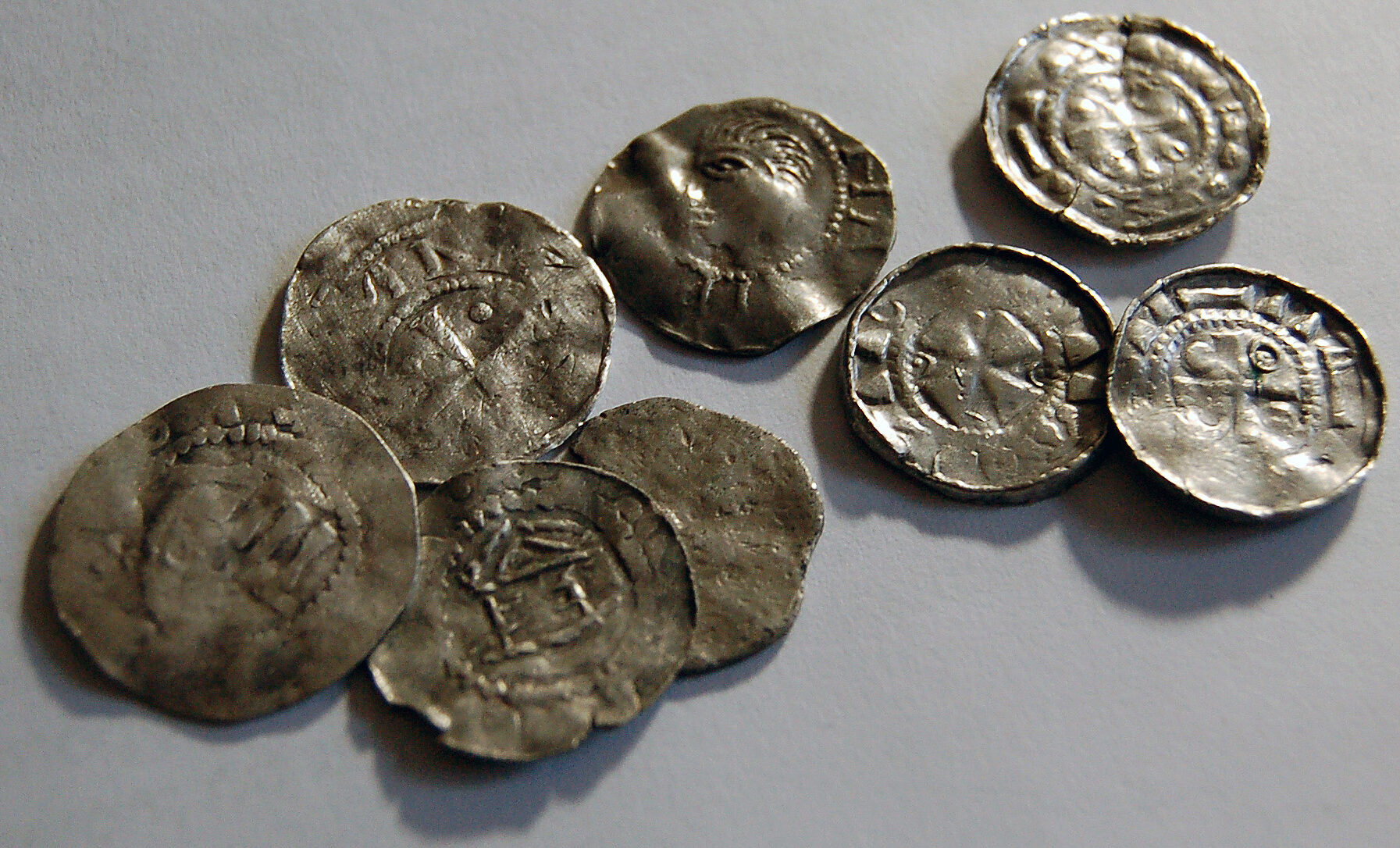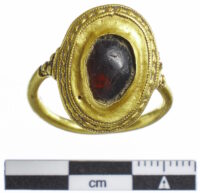 A metal detectorist has discovered a rare Merovingian gold ring dating to 500-600 A.D. in Emmerlev, Southwest Jutland, Denmark. The ring is made of 22-carat gold and is set with an oval cabochon almandine garnet, a red semi-precious stone prized among Germanic peoples as a symbol of power. The mount has four spirals on the underside and trefoil knobs where the band meets the bezel. The spirals and knobs are characteristic of the highest quality of Frankish manufacture, and rings of this type were worn by the elite of the Merovingian dynasty.
A metal detectorist has discovered a rare Merovingian gold ring dating to 500-600 A.D. in Emmerlev, Southwest Jutland, Denmark. The ring is made of 22-carat gold and is set with an oval cabochon almandine garnet, a red semi-precious stone prized among Germanic peoples as a symbol of power. The mount has four spirals on the underside and trefoil knobs where the band meets the bezel. The spirals and knobs are characteristic of the highest quality of Frankish manufacture, and rings of this type were worn by the elite of the Merovingian dynasty.
National Museum of Denmark curator Kirstine Pommergaard believes the quality and construction of the ring suggests there may have been an unknown noble family in the Emmerlev area with close connections to Merovingian royalty.
“The gold ring not only reveals a possible new princely family in Emmerlev, but also connects the area with one of Europe’s largest centers of power in the Iron Age. The gold ring is probably a woman’s ring and may have belonged to a prince’s daughter who was married to a prince in Emmerlev. Gold was typically reserved for diplomatic gifts, and we know that people married into alliances, just it probably happened with Thyra and Gorm the Old and in more recent times when Christian IX became known as ‘Europe’s father-in-law’ for marrying his daughters into other royal houses, ” she says.
Archaeologists do not think the ring was at that location because it was lost on the way to somewhere else. Almost a thousand ancient and medieval artifacts (gold and silver trade coins, textiles, pottery) have been found at Emmerlev, evidence that busy international trade was taking place there for centuries. The trading post of Ribe was just 30 miles north of Emmerlev, an important stop in the lucrative trade network of the Wadden Sea region.
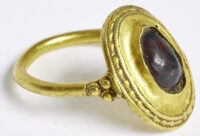 Gold and silver coins in the Emmerlev area confirm Merovingian contact, and the Merovingian kings and merchants did trade through the Wadden Sea network to Ribe. Making a marriage alliance with a Southern Jutland potentate would therefore have been highly advantageous to provide them with safe harbor and local influence.
Gold and silver coins in the Emmerlev area confirm Merovingian contact, and the Merovingian kings and merchants did trade through the Wadden Sea network to Ribe. Making a marriage alliance with a Southern Jutland potentate would therefore have been highly advantageous to provide them with safe harbor and local influence.
The find was actually made in 2020, but the discovery of the ring has been kept under wraps until now to allow metal detectorists and archaeologists to explore the site without unwanted attention.The finder, Lars Nielsen, turned the ring in to the Museum Sønderjylland when he found it, and the local museum has now transferred it to the National Museum in Copenhagen.
”We’ve never seen anything like it out here. Many discoveries have been made over time that point to global trade connections at the Wadden Sea. The gold ring substantiates that there has also been an elite who have had something to do with music. Not everyone has had contact with the Merovingians, ” says Anders Hartvig, museum curator at Museum Sønderjylland.
Kirstine Pommergaard adds:
“The Merovingians were interested in entering into a network with families and individuals who could control trade and resources in an area. “Perhaps the princely family in Emmerlev had control over an area between Ribe and Hedeby and thus secured trade in the area,” she says.
